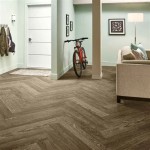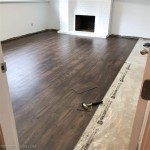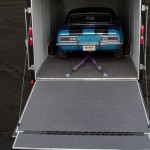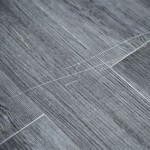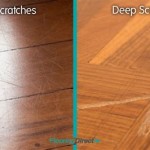Installing Solid Wood Flooring On A Concrete Slab
Installing solid wood flooring over a concrete slab presents unique challenges compared to installing it over a traditional wood subfloor. Concrete is porous and can retain moisture, which can be detrimental to solid wood flooring. Solid wood, unlike engineered wood, is susceptible to expansion and contraction with changes in humidity. Therefore, careful preparation and specific installation methods are crucial for a successful and long-lasting result.
This article outlines the necessary steps, considerations, and best practices for installing solid wood flooring on a concrete slab, ensuring a stable and aesthetically pleasing floor that will withstand the test of time.
Understanding the Challenges and Requirements
Concrete slabs are naturally porous, absorbing moisture from the ground and the surrounding environment. This moisture can migrate upwards, potentially damaging solid wood flooring, causing it to warp, cup, or even rot. Additionally, concrete is a very hard surface, making direct nailing or gluing of solid wood flooring impractical and potentially ineffective. The lack of a traditional subfloor also means there is no natural give or cushioning underfoot.
Therefore, the primary concerns when installing solid wood flooring over concrete are moisture control, providing a suitable substrate for the wood, and ensuring proper acclimation of the wood itself. Overcoming these challenges involves a multi-faceted approach that addresses each issue directly.
Before any installation work begins, several crucial steps must be taken. These steps include testing the concrete slab for moisture content, preparing the surface, and selecting the appropriate installation method and materials. Neglecting any of these prerequisites can compromise the entire installation, leading to costly repairs or complete failure of the flooring.
Different types of solid wood flooring may also be more or less suitable for installation over concrete. Wider planks are generally more susceptible to movement due to expansion and contraction, so narrower planks might be a better choice. Similarly, certain wood species are more dimensionally stable and resistant to moisture than others. Choosing a suitable wood species is a vital consideration.
Preparing the Concrete Slab
The first and arguably most important step is to test the concrete slab for moisture. High moisture levels are the primary enemy of solid wood flooring installed over concrete. Several methods can be used to test moisture levels, each with its own advantages and disadvantages.
One common method is the calcium chloride test (also known as the anhydrous calcium chloride test). This involves placing a measured amount of calcium chloride under a sealed dome on the concrete surface for a specific period (typically 72 hours). The calcium chloride absorbs moisture from the concrete, and the weight gain is measured to determine the moisture emission rate. The results are typically expressed in pounds of moisture emitted per 1,000 square feet over 24 hours. Most flooring manufacturers specify a maximum moisture emission rate allowed for their products.
Another method involves using a moisture meter. These meters use electrical resistance or capacitance to measure the moisture content of the concrete. While convenient and relatively quick, moisture meters only measure surface moisture and may not accurately reflect the moisture content deeper within the slab. It's important to use a calibrated meter and to take multiple readings across the slab to get a representative assessment.
If the moisture tests reveal excessive moisture levels, remediation is necessary before proceeding with the installation. This may involve applying a moisture barrier to the concrete slab. Several types of moisture barriers are available, including epoxy-based coatings and liquid-applied membranes. These barriers create a waterproof layer that prevents moisture from migrating upwards into the wood flooring.
In addition to moisture testing and remediation, the concrete slab must be thoroughly cleaned and prepared. Remove any existing coatings, adhesives, or debris. Grind down any high spots or fill in any cracks or holes. A level and smooth surface is crucial for a successful installation. A self-leveling underlayment can be used to create a perfectly level surface if the concrete slab has significant imperfections.
After cleaning and leveling, the concrete slab should be properly primed. Priming helps to improve the adhesion of the adhesive or moisture barrier. Use a primer specifically designed for use with concrete and the type of adhesive or moisture barrier you will be using. Follow the manufacturer's instructions for application and drying time.
Allow sufficient time for the concrete slab and any applied coatings or primers to fully dry and cure before proceeding with the installation. Rushing this process can lead to adhesion problems and moisture-related issues later on.
Selecting the Appropriate Installation Method and Materials
There are primarily two methods for installing solid wood flooring over concrete: gluing and floating. Each method has its own advantages and disadvantages, and the choice depends on several factors, including the type of flooring, the moisture content of the concrete, and the desired level of performance.
Gluing involves directly adhering the solid wood flooring to the concrete slab using a specially formulated adhesive. This method provides a very stable and secure installation, but it is more susceptible to moisture-related problems if the concrete slab is not properly prepared or if the adhesive is not moisture-resistant. It's crucial to use an adhesive specifically designed for installing solid wood flooring over concrete and to follow the manufacturer's instructions carefully. The adhesive should be compatible with both the wood species and the type of moisture barrier, if one is used.
Floating involves installing the solid wood flooring over a foam or cork underlayment, without directly adhering it to the concrete slab. The planks are typically glued or clipped together along their edges to create a single, continuous surface that "floats" over the underlayment. This method is more forgiving of minor imperfections in the concrete slab and provides some insulation and sound dampening. However, it can feel less solid underfoot compared to a glued-down installation.
When selecting the underlayment for a floating installation, choose a product that is specifically designed for use with solid wood flooring over concrete. The underlayment should provide adequate cushioning and moisture protection. Some underlayments also have a built-in vapor barrier.
Regardless of the installation method, acclimating the solid wood flooring to the job site is crucial. This involves storing the flooring in the room where it will be installed for several days or even weeks before installation. This allows the wood to adjust to the temperature and humidity conditions of the room, minimizing expansion and contraction after installation. Follow the flooring manufacturer's recommendations for acclimation.
The choice of adhesive is paramount for a glued-down installation. Urethane-based adhesives are generally recommended for their strong bond and moisture resistance. However, it's imperative to consult with the adhesive manufacturer to ensure compatibility with the specific wood species and the concrete slab conditions. Application of the adhesive should be consistent and according to the manufacturer's specifications, using the appropriate trowel size to achieve the correct spread rate.
For a floating floor, selecting the right underlayment is equally important. The underlayment should provide adequate cushioning, sound absorption, and moisture protection. Consider underlayments with integrated vapor barriers to provide an additional layer of protection against moisture migration from the concrete slab.
During the acclimation period, monitor the humidity and temperature levels in the room. Ideally, maintain a consistent temperature and humidity level that is representative of the conditions the floor will be exposed to during its lifespan. This will help to ensure that the wood flooring is properly acclimated before installation.
When installing the flooring, leave adequate expansion gaps around the perimeter of the room and around any fixed objects, such as pipes or columns. These gaps allow the wood to expand and contract without putting pressure on the walls or other structures. Cover the expansion gaps with baseboards or trim moldings.
Using specialized tools can greatly improve the quality of the installation. A tapping block and pull bar can help to ensure tight seams between planks, while a moisture meter can be used to monitor the moisture content of the wood flooring during installation. Proper safety equipment, such as eye protection and a dust mask, should always be worn.

Installing Wood Flooring Over Concrete Diy

Q A Solid Wood Floors Over Concrete Slabs Jlc

Installing A Hardwood Floor Over Concrete Slab American Information Center

Fitting Hardwood Floor To Concrete Wood And Beyond Blog

Installing Engineered Hardwood On Concrete Twenty Oak
How To Install Wood Floors On Concrete Quora

Installing Wood Subfloors Over Concrete Hardwood Floors

Installing Engineered Hardwood On Concrete Twenty Oak

How To Lay Solid Wood Flooring Over Concrete

Installing Wood Flooring On A Concrete Sub Floor Esb
Related Posts


